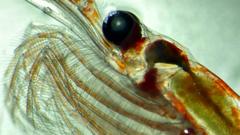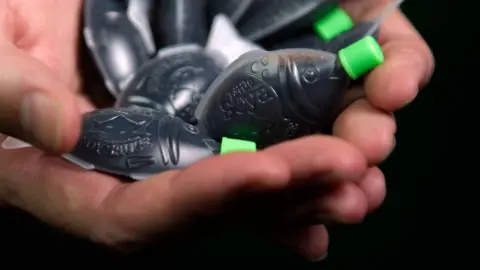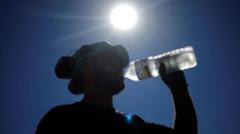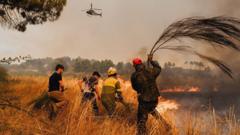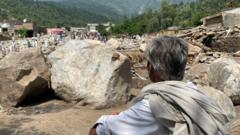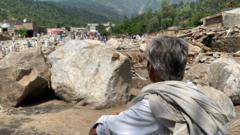Researchers have uncovered an astonishing aspect of zooplankton's contribution to mitigating climate change. These tiny animals, often used as aquarium food, engage in a fascinating annual migration. During spring, they gorge on phytoplankton, storing fat before sinking into the depths of the Southern Ocean, where this fat is burned, effectively locking away substantial amounts of carbon dioxide. This process sequesters as much carbon as the emissions from 55 million cars annually, according to a recent study led by Dr. Guang Yang from the Chinese Academy of Sciences.
Despite their crucial role, these creatures remain largely unrecognized, overshadowed by larger Antarctic fauna such as whales and penguins. Copepods, a type of zooplankton, and their life cycle are particularly intriguing. Ranging from a mere 1 to 10mm, copepods typically spend most of their lives at depths of 500 to 2000 meters. Prof. Daniel Mayor, who has studied these organisms extensively, highlighted their role in capturing excess heat from human activity. Globally, oceans have absorbed about 90% of the excess heat produced by greenhouse gas emissions, with the Southern Ocean accounting for 40% of that absorption, largely due to zooplankton.
The new research quantified the carbon storage associated with the seasonal vertical migration of zooplankton, a process previously underestimated. By analyzing data over several decades, researchers determined that this migration mechanism transports approximately 65 million tonnes of carbon to depths of over 500 meters each year. This carbon sequestration is vital in mitigating atmospheric warming, particularly in the context of evolving climate models.
However, the future of these microscopic defenders is jeopardized by climate change, commercial krill harvesting, and environmental disturbances. In 2020, the fishing industry harvested nearly half a million tonnes of krill, a direct competitor for food. Such pressures could diminish zooplankton populations, compromising their ability to lock away carbon in ocean depths.
Further research is underway to deepen understanding of the zooplankton migration process. Scientists continue to collect samples aboard the Sir David Attenborough and study the impacts of a warming ocean. They reiterate the importance of integrating these findings into climate models, as the absence of zooplankton's carbon storage capability would result in alarmingly higher CO2 levels in the atmosphere.
In conclusion, recognizing and protecting these tiny marine creatures is essential for the health of our planet. The ongoing research published in the journal Limnology and Oceanography stresses the need for ongoing attention to the influential roles played by even the smallest of Earth's residents.
Despite their crucial role, these creatures remain largely unrecognized, overshadowed by larger Antarctic fauna such as whales and penguins. Copepods, a type of zooplankton, and their life cycle are particularly intriguing. Ranging from a mere 1 to 10mm, copepods typically spend most of their lives at depths of 500 to 2000 meters. Prof. Daniel Mayor, who has studied these organisms extensively, highlighted their role in capturing excess heat from human activity. Globally, oceans have absorbed about 90% of the excess heat produced by greenhouse gas emissions, with the Southern Ocean accounting for 40% of that absorption, largely due to zooplankton.
The new research quantified the carbon storage associated with the seasonal vertical migration of zooplankton, a process previously underestimated. By analyzing data over several decades, researchers determined that this migration mechanism transports approximately 65 million tonnes of carbon to depths of over 500 meters each year. This carbon sequestration is vital in mitigating atmospheric warming, particularly in the context of evolving climate models.
However, the future of these microscopic defenders is jeopardized by climate change, commercial krill harvesting, and environmental disturbances. In 2020, the fishing industry harvested nearly half a million tonnes of krill, a direct competitor for food. Such pressures could diminish zooplankton populations, compromising their ability to lock away carbon in ocean depths.
Further research is underway to deepen understanding of the zooplankton migration process. Scientists continue to collect samples aboard the Sir David Attenborough and study the impacts of a warming ocean. They reiterate the importance of integrating these findings into climate models, as the absence of zooplankton's carbon storage capability would result in alarmingly higher CO2 levels in the atmosphere.
In conclusion, recognizing and protecting these tiny marine creatures is essential for the health of our planet. The ongoing research published in the journal Limnology and Oceanography stresses the need for ongoing attention to the influential roles played by even the smallest of Earth's residents.

